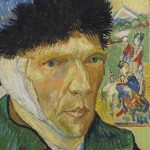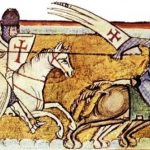 Technology
Technology  Technology
Technology  Humans
Humans 10 Everyday Human Behaviors That Are Actually Survival Instincts
 Animals
Animals 10 Animals That Humiliated and Harmed Historical Leaders
 History
History 10 Most Influential Protests in Modern History
 Creepy
Creepy 10 More Representations of Death from Myth, Legend, and Folktale
 Technology
Technology 10 Scientific Breakthroughs of 2025 That’ll Change Everything
 Our World
Our World 10 Ways Icelandic Culture Makes Other Countries Look Boring
 Misconceptions
Misconceptions 10 Common Misconceptions About the Victorian Era
 Mysteries
Mysteries 10 Strange Unexplained Mysteries of 2025
 Miscellaneous
Miscellaneous 10 of History’s Most Bell-Ringing Finishing Moves
 Technology
Technology Top 10 Everyday Tech Buzzwords That Hide a Darker Past
 Humans
Humans 10 Everyday Human Behaviors That Are Actually Survival Instincts
 Animals
Animals 10 Animals That Humiliated and Harmed Historical Leaders
Who's Behind Listverse?

Jamie Frater
Head Editor
Jamie founded Listverse due to an insatiable desire to share fascinating, obscure, and bizarre facts. He has been a guest speaker on numerous national radio and television stations and is a five time published author.
More About Us History
History 10 Most Influential Protests in Modern History
 Creepy
Creepy 10 More Representations of Death from Myth, Legend, and Folktale
 Technology
Technology 10 Scientific Breakthroughs of 2025 That’ll Change Everything
 Our World
Our World 10 Ways Icelandic Culture Makes Other Countries Look Boring
 Misconceptions
Misconceptions 10 Common Misconceptions About the Victorian Era
 Mysteries
Mysteries 10 Strange Unexplained Mysteries of 2025
 Miscellaneous
Miscellaneous 10 of History’s Most Bell-Ringing Finishing Moves
10 Fascinating Facts about Life as a Medieval Monk
Picture the scene. It’s AD 1348. You’re a rural peasant born into a life of unimaginable hardship. All around you, serfs perform backbreaking work from dawn until dusk, working their feudal lord’s land to pay him his hefty dues.
The best you can hope for is that your small business as a basket weaver takes off enough to secure you a small land holding of your own, which may sustain you in old age. The worst you can expect is a life of crippling physical labor, a diet severely lacking in meat, and possibly an early death from childbirth or plague.
Under these circumstances, might you be tempted to take holy vows and become a monk? If so, read on—because there was a lot more to life as a monk than the silly haircut!
Related: 10 Misconceptions About Medieval Town Life
10 The Silly Haircut
Yeah, you know the one. The bowl cut with the circular bald patch on top? This unique style was achieved by shaving the middle section of the hair and trimming the rest. It held a great deal of spiritual significance for the monks who wore it.
The style is called a “tonsure,” and it was worn to represent a monk’s devotion to Christ. A few conflicting theories exist about why only a section of the head was shaved. Some believe the remaining circle of hair symbolized the crown of thorns Jesus wore during his crucifixion. Others think that the practice developed during the Crusades when Christians wanted to differentiate themselves from Muslims who ritually shaved off all their hair after visiting Mecca.
Either way, the haircut was rocked by many generations of monks for centuries until 1973 when the tonsuring ceremony was abolished by Pope Paul VI, and it declined in popularity. [1]
9 Home Sweet Home
Monks fared much better than the peasants and serfs when it came to the standard of their accommodation. Yes, their bedroom was essentially a cell with a bit of straw in it. They didn’t technically own very much at all—but they had a roof over their head and regular meals in their belly, which was more than could be said of the general population!
Many monasteries were huge, sprawling, ornate complexes built in the Gothic style and designed to showcase the wealth of the church and reflect the glory of God to the unwashed masses. It wouldn’t have been a bad place to hang out.
In England, settlements of monks have been found that date back to as early as AD 406. Monasteries in England famously came to an abrupt beginning in the 1530s during the reign of King Henry VIII, who grew so frustrated at having to ask the Pope’s permission to get a divorce he wiped the land of all traces of Catholicism and declared the country Protestant instead. The monasteries were ransacked, and the spoils were shared among the rich.[2]
End of an era!
8 Poverty, Chastity & Obedience
Hmmm. It’s not the most attractive of lifestyles, is it? A medieval monastery was a community of men who had foresworn earthly possessions and chosen to live apart from society among other like-minded fellows. They committed themselves to spiritual, rather than physical, pleasures. As such, they took vows of poverty, chastity, and obedience and were expected to live free of physical possessions and emotional attachment to the outside world. These vows were based on the writings of St. Benedict, who laid out the rules for an ideal monastic life all the way back in the 6th century.
Of course, chastity was easily avoided if a) you were attracted to men and b) you could find a willing (and discrete) partner within the monastery. For those lucky chaps, life was probably pretty sweet.[3]
7 The Icon
An important aspect of monastic life was the possession of an icon or holy relic. The icon could be anything that people might revere and flock to see—a piece of the original cross on which Christ was crucified, for example, or the bones of a saint. Or, in the case of the city of Turin in Italy, the shroud worn by Jesus in his tomb.
If you were lucky, your monastery’s relic would become famous, and Christians from far and wide would embark on a pilgrimage to see it—bringing with them much-needed business for the local area and a massive uptick in donations to your church.[4]
6 Shhhhhh!
If a monk found himself suffering from a touch of ennui after joining a monastic order, he wouldn’t have been able to pass the time by enjoying good gossip with his new co-workers. Monasteries were places of peace, and as such, most of the duties performed by monks were carried out in complete silence. They weren’t even allowed to chat at dinner!
Some monks got around the rule of silence by communicating in other ways. Sign language was used during meal times when a monk wanted to request food or drink. Some also communicated in secret by whistling! These methods were often taught to the young “novices” (teenage recruits who were learning the ways of monastic life) and “oblates” (children who had been entrusted to the care of the monks). In this way, the silent languages were passed down through the generations.[5]
5 Stand, Sit, Kneel… and Repeat
Starting to think life as a monk might have been a tad boring? Well, you’re probably right! Luckily, the tedium of charitable acts and perpetual silence was broken up regularly by lengthy and complicated church services.
Monks attended a whopping eight services each day. They woke with the sun (so summer was probably a lot more painful than winter!) and took part in various choral services such as Matins, Lauds, and Mass. They also held a daily Chapter, which was a formal meeting to discuss monastic business. In all, a monk could expect to participate in a church service for up to 10 hours per day. That’s a lot of chanting![6]
4 More Than Meat-Free Fridays
Medieval life was strictly regulated. England’s “sumptuary laws” dictated behavior in all sorts of areas, and not just for monks. There were laws about which clothes and colors people were allowed to wear based on their social status, for example, and how much eateries were allowed to charge for food.
Monasteries were generally very affluent institutions, and for all the drawbacks of monastic life, monks could usually rely on enjoying food regularly and of a high standard. However, by law, medieval folks were bound to observe three “fasting” days per week: Wednesdays, Fridays, and Saturdays. They observed many more during times of religious observances, such as Lent.
The word “fast” here doesn’t apply in the modern sense. During these specific days, people were only required to abstain from meat and dairy products. Fish and vegetables were fine. Amazingly, some monks missed meat so much during fasting days that they devised a way to beat the system—they re-categorized some meat items as fish! There’s evidence that beaver tails and rabbit fetuses were eaten during times of fasting. One group of monks in France even started gobbling up the local puffins![7]
3 The Arts
We’ve got a lot to thank our robe-clad brothers for. Monasteries were incredible places of learning, and monks (as well as their sisters over in the nunneries) spent a great deal of time and effort preserving, copying, and writing books and manuscripts. Thanks to them, many classics by Cicero, Aristotle, and Virgil survive. Free from the constant struggle to find food and with the great advantage of being literate, these men had the time and the tools to create great art. We can still see their imaginative flair in the illuminated manuscripts that survive and the choral music composed during the Middle Ages.
In fact, monasteries were often the only places that housed books. Books were very precious and expensive items. It’s no coincidence that monasteries were a main target during the Viking raids that took place in Europe up until the 11th century. Monks may have taken a vow of poverty—but the institutions themselves were filthy rich, and it seems many knew it.[8]
2 Jobs
On top of your daily commitments to church services, learning, and charitable acts, you might also be given a specific area of responsibility in the monastery. The “big cheese,” of course, was the abbot—and you probably wouldn’t be given that job unless you got very, very lucky.
The abbot liaised mainly with the outside world and was the “face” of the institution for the wider community. Next in the chain of command was the prior, who line-managed the monks. He appointed a steward, who looked after the monastery’s finances, and a cellarer who oversaw food and drink stores. The almoner was responsible for looking after the poor and needy out in the community, and the cantor ran the choir. The sacrist ensured the church was tidy and the services ran smoothly.[9]
Sounds exhausting!
1 Stylish Attire
When you picture a monk, you probably imagine a man dressed in brown robes, with sandals on his feet and rosary beads in his hand. In fact, robes came in many different colors and depended on which order you belonged to.
The Benedictine Order wore black and eventually became known as “the black monks.” The Carthusian Order wore white. The Capuchin friars in Italy wore brown robes with a long pointed hood—it’s from these monks that the word cappuccino is derived![10]








